Artisanopolis – Seasteading City Concept by Gabriel Scheare, Luke Crowley, Lourdes Crowley, and Patrick White
Artisanopolis, created by Gabriel Scheare, Luke & Lourdes Crowley, and Patrick White of Roark 3D and Fortgalt as a gift to The Seasteading Institute, in conjunction with the Institute’s Architectural Design Contest.
Description by The Seasteading Institute: Based on the foundational vision of The Seasteading Institute and DeltaSync, these works of art constitute an attempt at communicating the essence of what the infrastructure of sea-based civilization might look like in the near future. In this age of limited governance options, we intend to suggest an alternative model that allows new communities to form beyond the limiting jurisdictions of existing nation states in order to promote freedom and competition in the marketplace.
Each floating platform can be towed via tugboat from location to location and they can interlock to form sprawling formations over the water’s surface. Ballasts are used to adjust the depth at which the platforms sit in the water and coupling latches lock them together to form larger, cohesive footprints for convenience and stability. Modeled after those found at the seaport of Brighton, England, a large modular wavebreaker surrounds the city to shelter it from rough waters and wind while energy is supplied by renewable means like photovoltaic panel arrays and wave-driven turbines. Aquaponics greenhouse domes provide locally grown food, seawater is desalinated on site to provide drinking water, organic waste is removed via tankers to an off-site composting location, and inorganic waste is recycled. With so much focus on efficiency and sustainability, The Floating City Project promises to serve as a viable template upon which other seasteading projects can be modeled in the future.
All design contest images on this page are under the Creative Commons Attribution License. It means that you are allowed to redistribute and modify images but that you must attribute the original designer when doing so.
Note: Left-click on the images to see them in higher resolution.

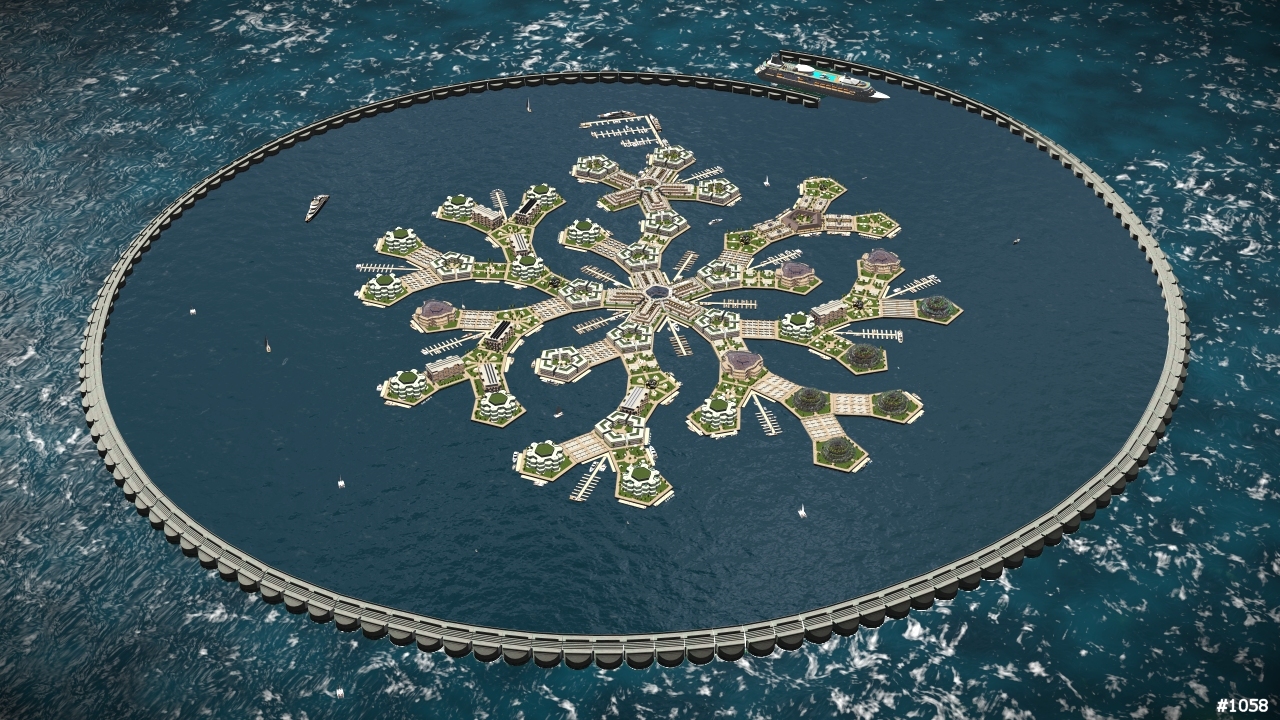

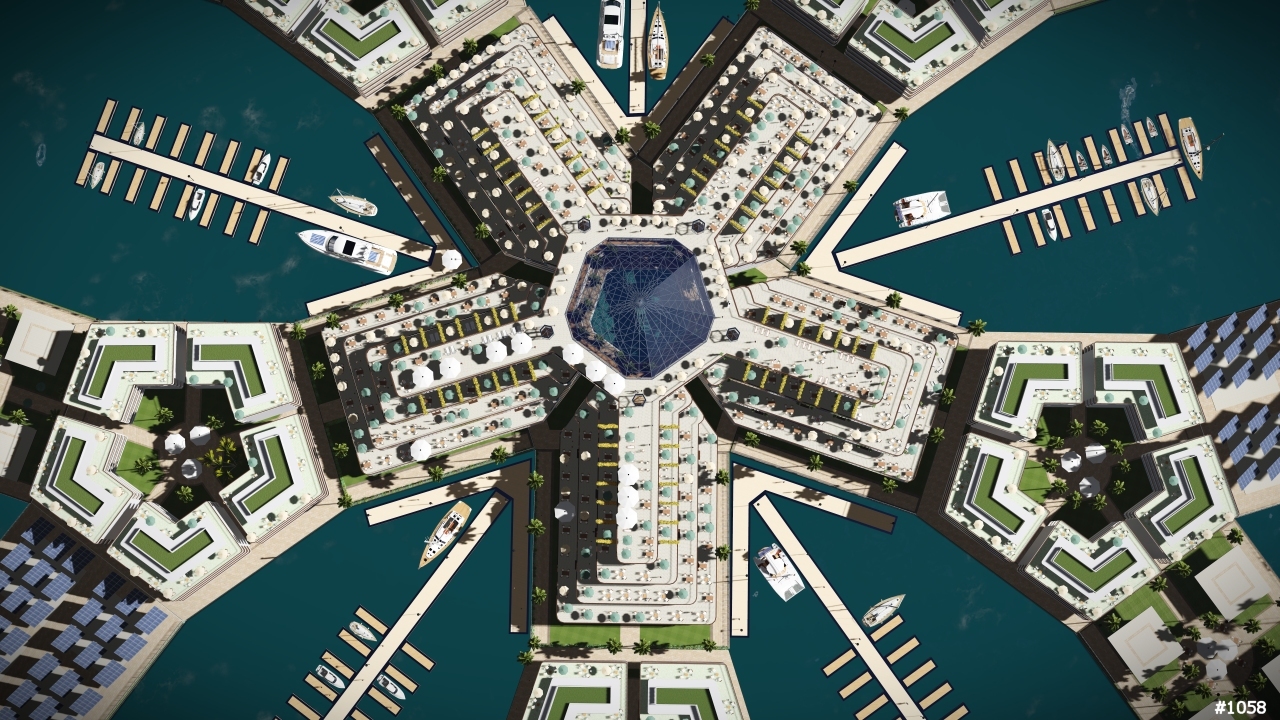
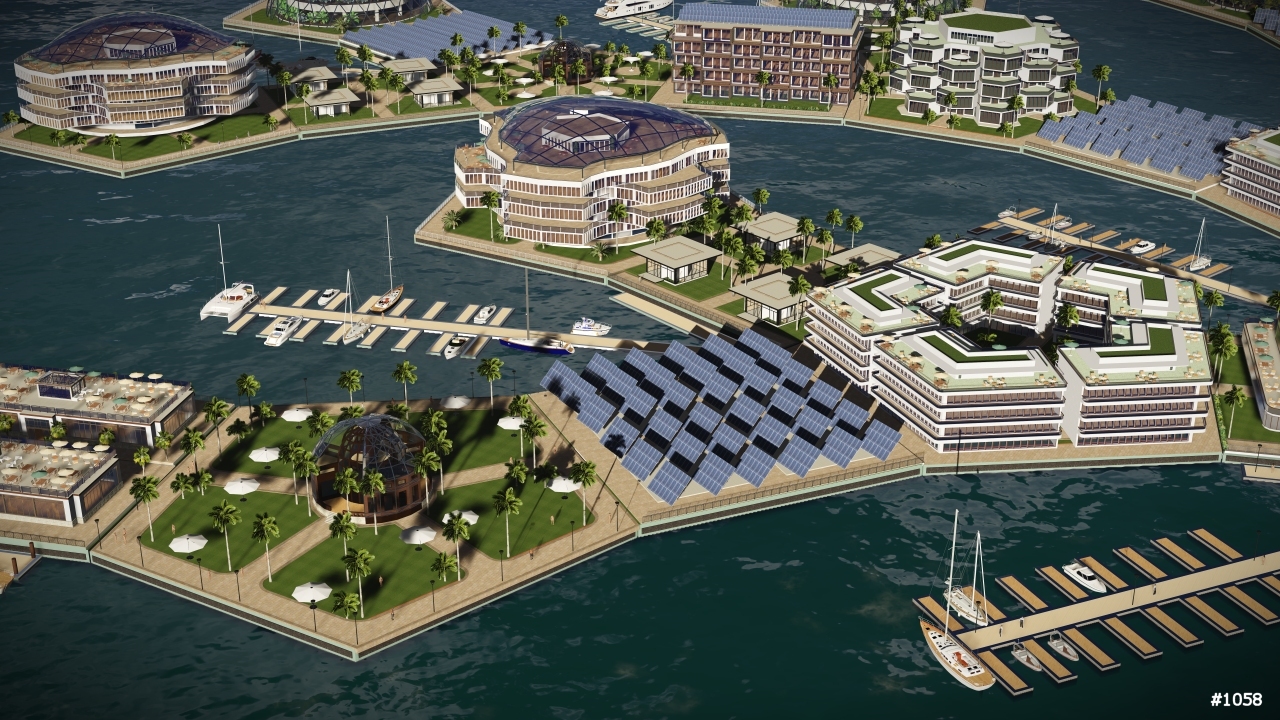

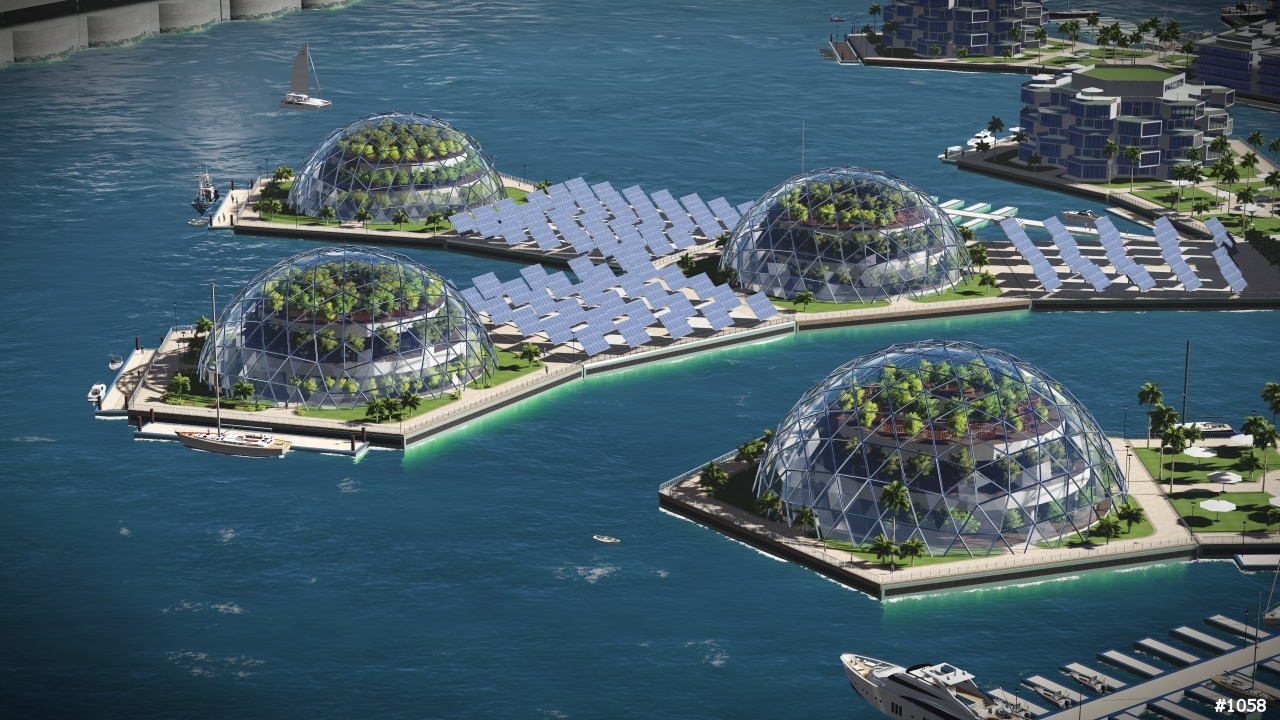



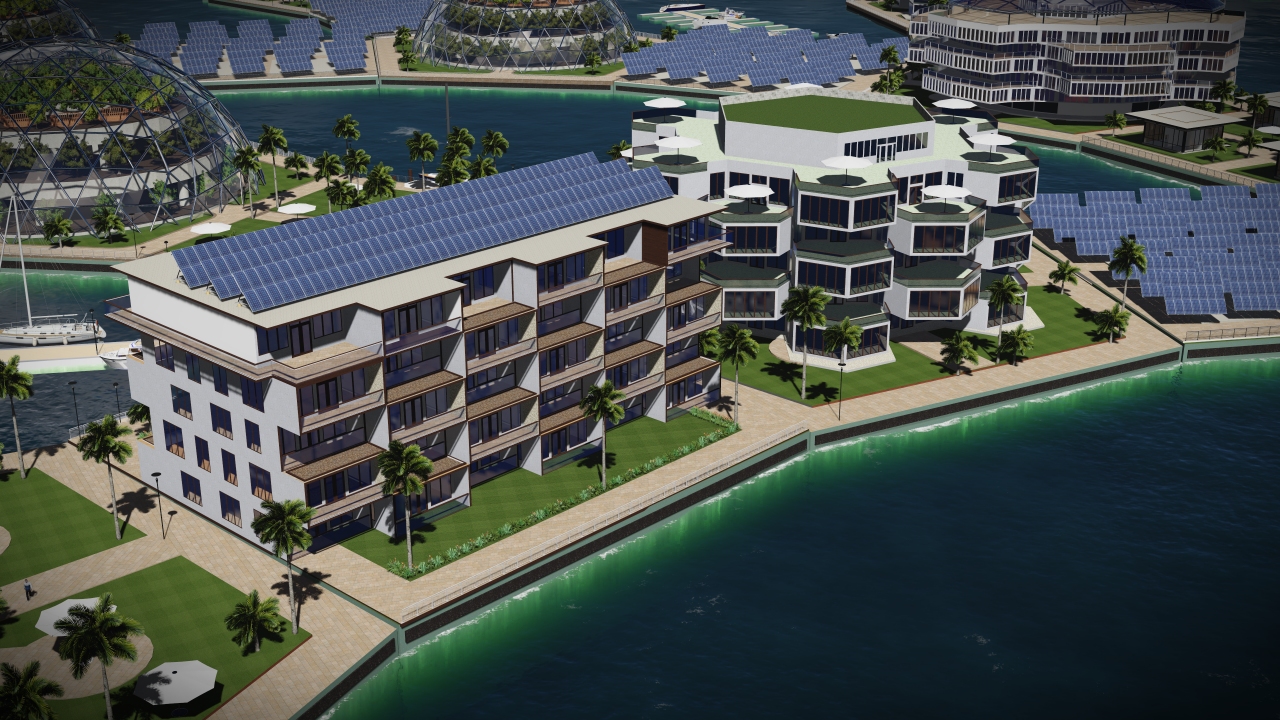


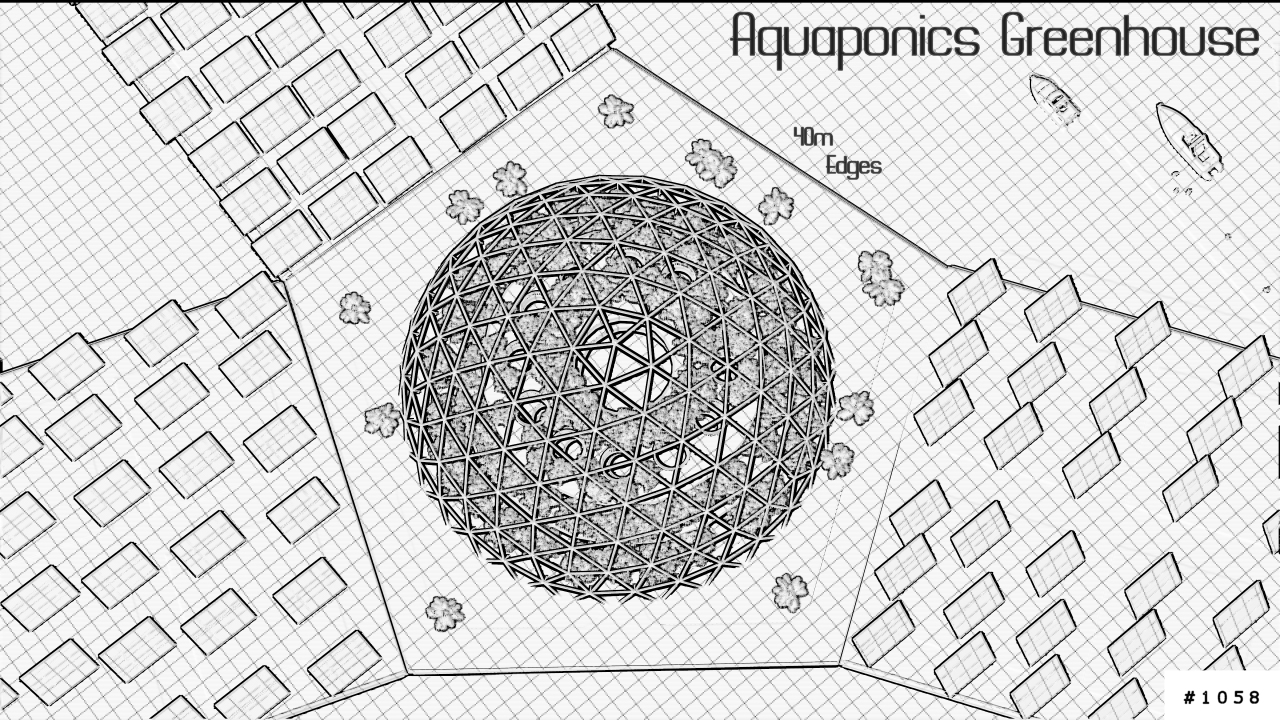
6 thoughts on “Artisanopolis – Seasteading City Concept by Gabriel Scheare, Luke Crowley, Lourdes Crowley, and Patrick White”
An unendingly beautiful vista. Truly fantastic artwork. What a wonderful place to live! 🙂
The great question, however, is whether or not this theoretical place can actually stand up to hurricanes. These monstrous Acts of Nature threaten tropical areas everywhere, at least a few times per year, and actually hit them every few years, or at least every few decades. So these “seasteading” libertarian refuges have to be hurricane-proof in some serious sense. There has to be a way to successfully “batten down the hatches” and then ride it out.
In Zoltan Istvan’s great novel The Transhumanist Wager the seasteading city-state was able to slowly move (5 m.p.h. if I remember correctly) via motors, and thus dodge all truly bad storms.
But the ultimate answer, please note, is still a libertarian ISLAND. The planet today is simply overflowing with suitable islands! These are of almost no value to the current owners — whether individuals or states — but of immense value to freedom-seekers. Securing several of these is a far better answer and strategy than, for example, the current New Hampshire “free state project” or the seasteading city-state so prettily portrayed above.
Floating cities are a interesting idea. This is a beautiful looking list ration of one, but I haven’t seen a solid reason to build them though. I mean what do you do with it? What’s it’s economics? The world full of lots of other gorgeous places you could build cities on that are abandoned because of no economic base.
Thank you for both of your comments, Mr. Zantonavitch and Ms. Starks.
In my view, the economic and political cases for seasteading are intertwined – and it is certainly a promising avenue to explore for maximizing individual liberty and unleashing human creativity toward the generation and acceleration of technological, economic, and cultural progress. I completely support and wish the best of success to all individuals and organizations pursuing such a worthy goal!
The economic rationale for creating seasteads is not for one entity to maximize profit next quarter or next year, but to create an environment in which thousands of entrepreneurs could pursue their rational self-interests (including their enrichment!) over the course of decades and even centuries to come.
With that being said, I certainly recognize that the concept of seasteading faces many technical and political challenges in the years to come – in terms of how to build seasteads in a cost-effective manner, in terms of withstanding natural disasters, and in terms of either preserving political sovereignty or otherwise maintaining a peaceful coexistence with nearby nation-states. A 2012 article of mine, “Seasteading’s Potential and Challenges: An Overview” – http://www.rationalargumentator.com/index/blog/2012/07/seasteading-overview/ – delves into many of these areas in greater depth, and may be of interest to you in considering further the issues you raised.
Hurricanes would certainly be a concern for any seasteading city located in the Atlantic Ocean, the Gulf of Mexico, or the Caribbean Sea. I hypothesize that the first large seasteads will emerge off of the Pacific Coast of the United States, however – as that is where the most active and expansive current base of support for seasteading is located. The Pacific Ocean near the US is, thankfully, quite free of hurricanes.
And, of course, I would also support the creation of libertarian jurisdictions on land, including on islands or on any continent in the world. Many of the fundamental questions to ask are the same – including whether the intended haven of freedom could protect itself from both natural and manmade perils and could attract enough people and enough economic activity to become viable.
Gennady — It didn’t occur to me that the West Coast of the US is free of hurricanes, but now that I think about it, that seems true. Maybe a few small ones very occasionally happen in Northern Mexico, if memory serves.
But the exasperating and infuriating thing here for liberty-seekers is that the various nearby countries seem like they’ll all be stunningly>/i> opposed, for absolutely no legitimate reasons, to seeing freedom grow in their midst. So truly harmless and virtuous micro-nations will likely have a really hard time being left alone to exist. 🙁
(corrected version:)
Gennady — It didn’t occur to me that the West Coast of the US is free of hurricanes, but now that I think about it, that seems true. Maybe a few small ones very occasionally happen in Northern Mexico, if memory serves.
But the exasperating and infuriating thing here for liberty-seekers is that the various nearby countries seem like they’ll all be stunningly opposed, for absolutely no legitimate reasons, to seeing freedom grow in their midst. So truly harmless and virtuous micro-nations will likely have a really hard time being left alone to exist. 🙁